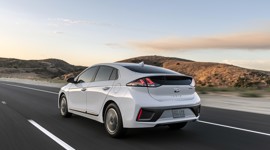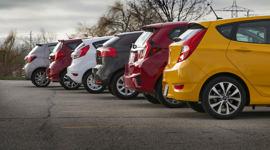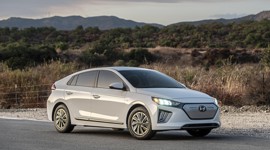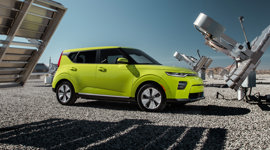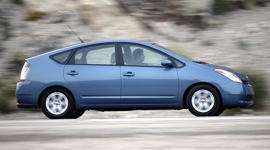There are hundreds of reasons people buy the cars they buy, and at least one of those reasons is maximum fuel efficiency. And, if having the smallest possible fuel bill is high on your list of priorities in your next vehicle, then you’ve come to the right place.
Below, we’ve compiled a list of the most fuel-efficient vehicles available to Canadian shoppers right now – based on the latest iteration of the Natural Resources Canada (NRCan) Fuel Consumption Guide. We’ll be reporting the combined fuel economy ratings below, but you can find the highway- and city-specific figures, and more information, here.
Rather than doing a traditional countdown, we’ll be counting up, starting with the most fuel-efficient non-hybrid cars on the market.
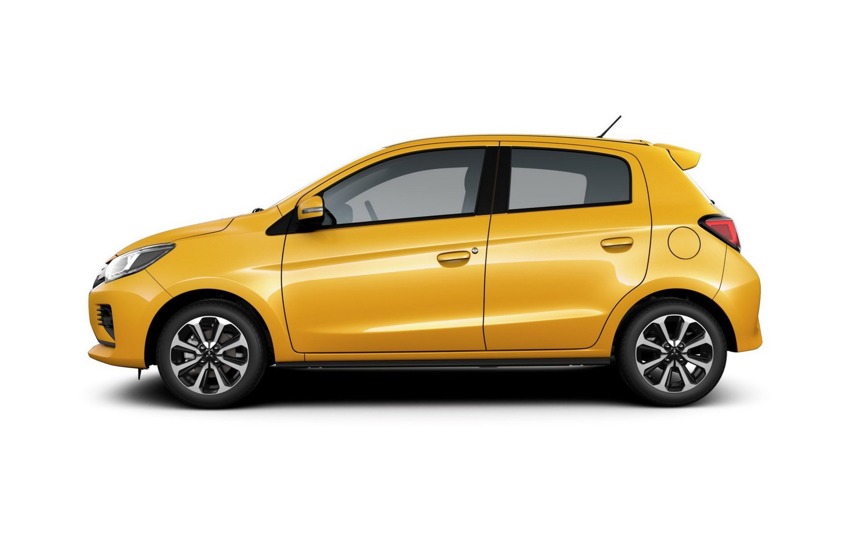
Most Fuel-Efficient Gasoline-Only Vehicles of 2020
Although the price premium for hybrids has come down significantly in the last decade, there remains a gap that’s not covered by any government rebate programs. Servicing and maintaining a hybrid is also more complicated than with a pure internal-combustion engine (ICE) drivetrain. For people on a budget, or for those who prefer to work on their own cars, these are the most fuel-efficient vehicles.
6.2 L/100 km – 2020 Mitsubishi Mirage (CVT)
In first place on that basis, it’s the Mitsubishi Mirage, with a 6.2 L/100 km combined rating from models with the automatic continuously variable transmission (CVT).
6.5 L/100 km – 2020 Honda Fit & Mitsubishi Mirage (Manual)
In second place, it’s the Honda Fit and the manual version of the Mitsubishi Mirage. The latter has the distinction of being the cheapest vehicle on this list; it’s more expensive than the Chevrolet Spark and recently discontinued Nissan Micra, but neither of them made this ranking. But if you’re looking for the lowest purchase price, why not consider a used car?
6.6 L/100 km – 2020 Kia Rio & Toyota Yaris (Auto)
Next, it’s the Kia Rio sedan and the Toyota Yaris hatchback equipped with the six-speed automatic, clocking in at 6.6 L/100 km combined.
6.7 L/100 km – 2020 Hyundai Accent, Nissan Versa, Toyota Corolla & Corolla Hatch
The Hyundai Accent, Toyota Corolla (sedan and hatchback), and Nissan Versa are all right on their tail at 6.7 L/100 km.
6.8 L/100 km – 2020 Hyundai Elantra
With a new generation on the horizon for 2021, the 2020 Hyundai Elantra manages to hold its own on this list at 6.8 L/100 km.
6.9 L/100 km – 2020 Honda Civic Hatch, Toyota Camry, Yaris (Manual)
The Honda Civic Hatchback and Toyota Camry both squeak in just under our 7.0 L/100 km cut-off, along with the manual version of the Toyota Yaris.
Notice a trend? For the best fuel efficiency, go with the automatic transmission – modern automatics are no longer bound by a small number of gears and can dial in an appropriate ratio for every setting.
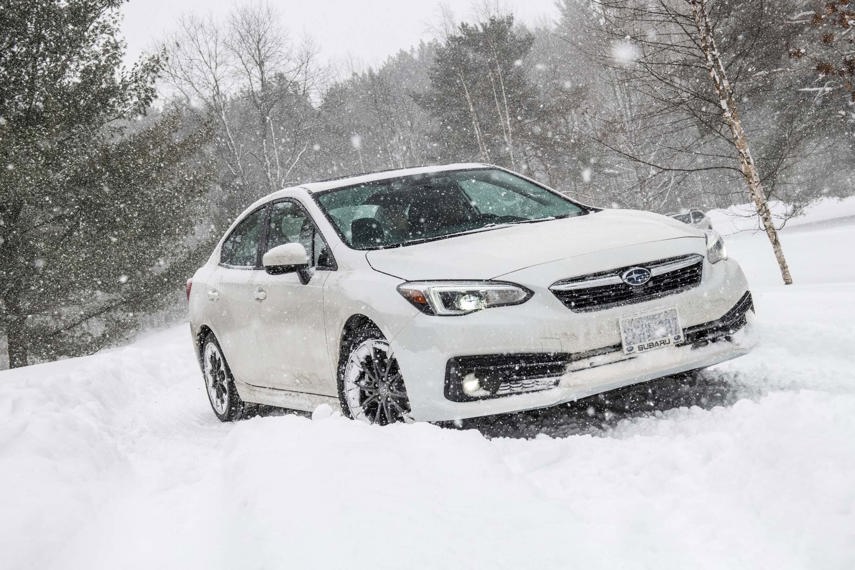
Most Fuel-Efficient Gasoline-Only Vehicles with AWD of 2020
Many drivers swear by all-wheel drive for additional confidence in poor weather and on rough roads – though it’s no substitute for a good set of winter tires – but it comes with a fuel economy penalty: Not one of these non-hybrid AWD vehicles breaches the 7.0 L/100 km mark.
7.5 L/100 km – 2020 Subaru Impreza
The AWD-equipped Subaru Impreza sedan is the most fuel-efficient non-hybrid car with AWD on the page, rated at 7.5 L/100 km combined; the wagon comes in at 7.6 L/100 km.
7.9 L/100 km – 2020 Nissan Altima, Subaru Crosstrek & Legacy
The larger Nissan Altima AWD offers a 7.9 L/100 km combined rating, which ties the Subaru Crosstrek and Legacy.
That makes the Crosstrek the most fuel-efficient non-hybrid crossover in the game at the moment, with the Honda CR-V AWD (8.1 L/100 km) coming in just behind it. Remaining competitors in the segment – including the Toyota RAV4 and Ford Escape – can be found landing within a few tenths of a litre of that mark.
Now, let’s reconsider the list above, with hybrid-powered cars included.
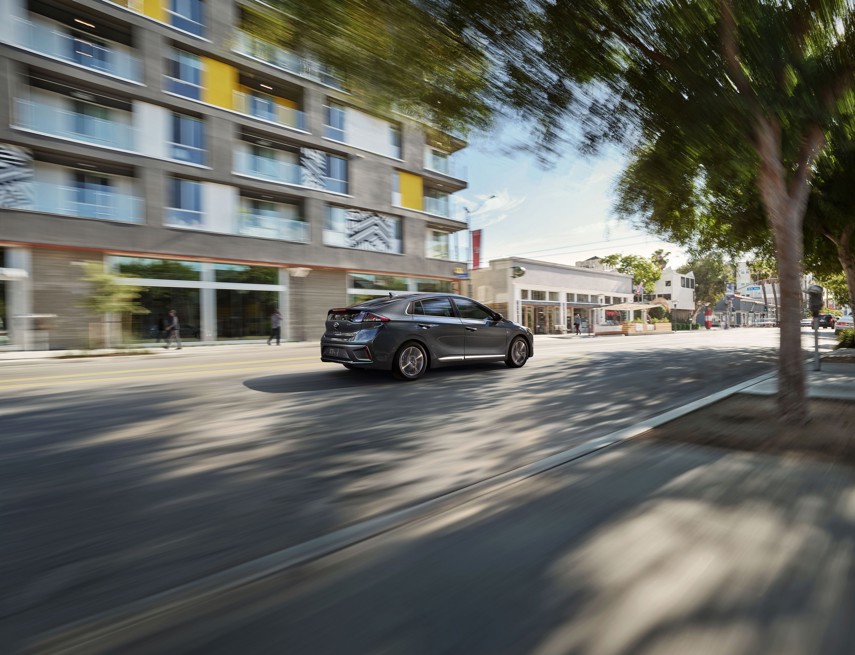
Most Fuel-Efficient Hybrid and Plug-In Hybrid Vehicles of 2020
With fuel economy figures this low, the rating can vary even within different trims of a single model. For the sake of simplicity, we’ll be combining multiple trims under one heading and including plug-in hybrid (PHEV) versions where applicable.
Note that PHEVs are at a disadvantage on this list, as their heavier battery packs count against their fuel consumption but the ratings also don’t reflect their pure-electric range. In the real world, for most Canadians living in urban or suburban areas with access to charging stations either at home or at work, it’s entirely possible to achieve near-zero fuel usage.
4.1–4.5 L/100 km – 2020 Hyundai Ioniq & Ioniq Plug-In Hybrid
Rated at 4.1 L/100 km combined, the base “Essential” trim of the 2020 Hyundai Ioniq is Canada’s most fuel-efficient vehicle of 2020, according to NRCan – and that’s including plug-in hybrids (unless they’re operating in pure electric mode, of course, in which case they’d use no fuel). The other Ioniq trims are just barely higher in consumption at 4.2 L/100 km.
The Ioniq plug-in hybrid, meanwhile, clocks in at 4.5 L/100 km when it’s not running off its 8.9 kWh battery, which has a maximum range of 47 km.
4.3–4.7 L/100 km – 2020 Toyota Prius & Prius Prime
The 2020 Toyota Prius Prime plug-in hybrid is the most fuel-efficient PHEV, edging out the Ioniq PHEV, at 4.3 L/100 km. However, it boasts a shorter maximum range of 40 km.
The front-wheel-drive Prius is rated at 4.5 L/100 km; the all-wheel-drive version, the Prius e-AWD, is rated 4.7 L/100 km, which makes it the most efficient AWD vehicle on this list.
4.5 L/100 km – 2020 Toyota Corolla Hybrid
At 4.5 L/100 km combined, the Toyota Corolla Hybrid shares third place with the FWD Prius and Hyundai Ioniq PHEV.
4.7–5.4 – 2020 Kia Niro & Niro PHEV
The Kia Niro runs a wide gamut of fuel consumption numbers, depending on trim. Starting at 4.7 L/100 km combined in base “L” trim, it goes to 4.8 L/100 km in the intermediate “EX” trims, before topping out at 5.4 L/100 km in the “Touring” trim.
The Niro PHEV splits the difference at 5.1 L/100 km, and features a maximum range of 42 km.
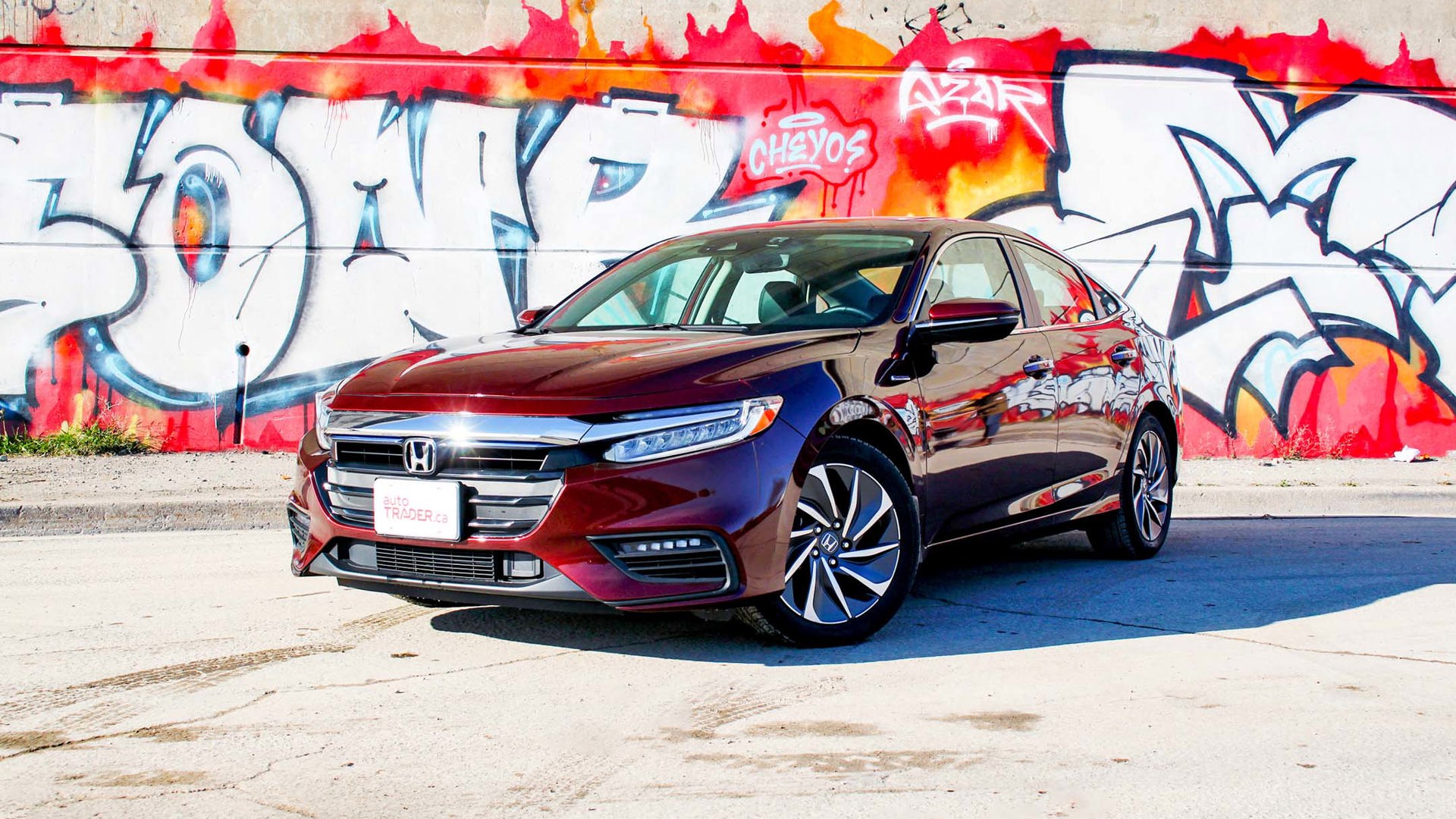
4.9 L/100 km – 2020 Honda Insight
Sliding in under 5.0 L/100 km, it’s the Honda Insight hybrid. Returning in 2019 after a brief hiatus, the new generation of Insight is perhaps most remarkable for how unremarkable it is, looking like any other compact sedan on the road, especially compared to the Prius, which has doubled down on its outlandishly sci-fi styling.
4.9–5.1 L/100 km – 2020 Toyota Camry Hybrid
The Toyota Camry LE ties with the Insight at 4.9 L/100 km combined. The SE and XLE trim grades clock in at 5.1 L/100 km.
5.0 L/100 km – 2020 Honda Accord Hybrid
The Honda Accord Hybrid lands in the middle of the Camry Hybrid trims at 5.0 L/100 km on the dot.
5.1 L/100 km – 2020 Toyota Prius c
The itty-bitty Prius c is discontinued – you can’t find it on Toyota’s website and we reported its demise last year – yet there’s an entry for a 2020 version on the NRCan website: 5.1 L/100 km, same as the upgrade trims of the much larger Camry, a figure that belies the age of its powertrain, which dates from 2012.
5.3 L/100 km – 2020 Lexus ES 300h
The luxurious Lexus ES 300h comes in at 5.3 L/100 km. Though it’s closely related to the Toyota Avalon, the latter isn’t offered as a hybrid.
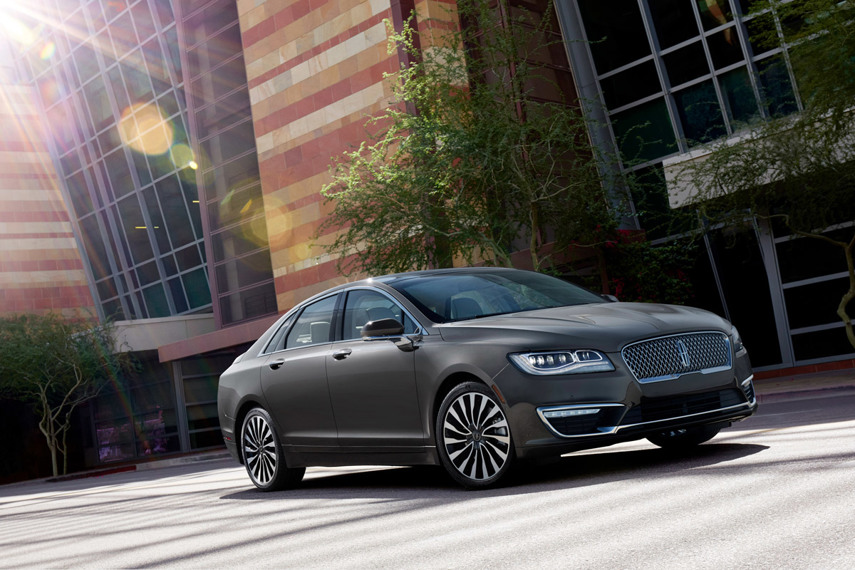
5.6 L/100 km – 2020 Ford Fusion Hybrid, Fusion Energi, Honda Clarity & Lincoln MKZ Hybrid
The mid-size Ford Fusion Hybrid, Fusion Energi PHEV, and Lincoln MKZ Hybrid all come in at 5.6 L/100 km. The Honda Clarity PHEV shares that same figure despite being a full foot shorter. The reason? We suspect it may have to do with its hefty battery pack, which boasts a maximum range of 77 km. The Fusion Energi, meanwhile, manages 42 km.
5.6–5.7 L/100 km – 2020 Kia Optima Hybrid & Optima PHEV
There’s actually another car that can claim 5.6 L/100 km: the Kia Optima Hybrid. The Optima PHEV, is rated 5.7 L/100 km, with a maximum range of 45 km.
5.8–5.9 L/100 km – 2020 Ford Escape Hybrid & Escape Plug-In Hybrid
The 2020 Ford Escape marks an all-new generation, and the return of the hybrid, which manages 5.8 L/100 km in FWD and 5.9 L/100 km in AWD. The plug-in hybrid, which doesn’t yet have official NRCan numbers, has been rated by the EPA at 5.8 L/100 km combined with 48 km of pure-electric range.
6.0 L/100 km – 2020 Lexus UX 250h, Toyota RAV4 Hybrid
At 6.0 L/100 km combined, it’s the Lexus UX 250h AWD and Toyota RAV4 Hybrid AWD. Don’t let the fuel economy figure fool you, however, the UX is in a different size class and is based on the relatively low-slung Toyota C-HR.
6.7 L/100 km – 2020 Subaru Crosstrek PHEV & Toyota Highlander Hybrid
If you’re keeping score, the Crosstrek PHEV and Highlander Hybrid share the same fuel consumption rating as the Accent, Corolla, and Versa – and are bested by half of that initial list – but these two vehicles are bigger, farther off the ground, and are all-wheel-drive. In addition, the Crosstrek PHEV can travel 27 km on its battery pack alone.

What About Diesels?
If we had made up this list for 2019, you would have seen a total of four diesel vehicles on this list: the Chevrolet Cruze sedan and hatchback, and the Jaguar XE and XF. As of 2020, the Cruze has been discontinued and Jaguar doesn’t offer any diesel engine options with its vehicles.
The current crop of diesel passenger vehicles – all trucks or SUVs – consume 8.9 L/100 km at a minimum, reflecting an emphasis on low-end torque rather than outright fuel efficiency in these applications. It’s unlikely we’ll see diesel models return: These two traditional strengths of a diesel powertrain are now commonly available, in the form of hybrid vehicles, with the benefit of reduced emissions when the vehicle is in operation.
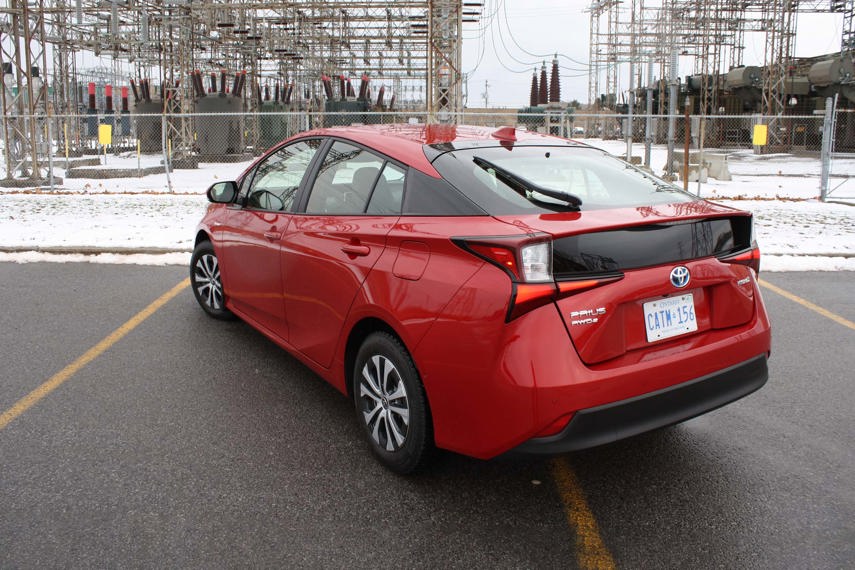
What Does This Mean for You?
It can be intimidating at first to see a wall of numbers and figures, however, the length of these lists should be very encouraging to anyone looking to save money at the pumps. There’s a broad range of models available, with many large enough for most families.
So what else does the data say?
First, though the Toyota Prius has been synonymous with “hybrid” for years, you can now find hybrid offerings from just about every manufacturer out there. In particular, Hyundai, Honda, and Ford have all made very strong showings in our ranking. Of course, Toyota hasn’t been resting on its laurels and has been working to electrify its entire lineup, with great results.
Second? Shoppers uninterested in a hybrid but set on fuel efficiency and AWD should think “Subaru, Nissan, Honda or Toyota.” The Subaru Crosstrek crossover, Legacy sedan, and Impreza compact, along with the new Nissan Altima AWD and Honda CR-V AWD, are the most fuel-efficient non-hybrid AWD models available today.
Third? Remember that you may not need a new car to cut your fuel bill. In some cases, TLC spent on an older vehicle by way of a tune-up, tire pressure check, and new engine air filter can cut fuel usage by 20 per cent or more.
